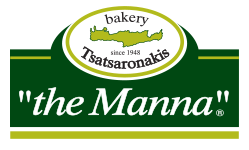
The nutritional value of fibre
Dietary fibre has a great nutritional value and holds multiple health benefit. Essentially, they are non-digestible polysaccharides found in plants which can be completely or partially broken down by colorectal bacteria, as opposed to carbohydrates which are digested and converted to glucose metabolized within the cells. Dietary fibre can be distinguished into that dissolve hot water and can be found in fruits, vegetables, pulses, barley and oats, and in non-soluble fibre present in whole grain cereals, wheat and corn, bread or whole grain rusks.
The role of fibre in the human body is extremely important due to its properties, such as the ability to absorb large quantities of water, gel formation, nutrient absorption and accelerating the digestion process. Fibre is not digested by human digestive enzymes and remains intact both in the stomach and the small intestine, which is the main nutrient absorption area. Preventing the absorption of carbohydrates and fats into the small intestine is another very important property as it regulates blood glucose concentration.
Fibre can also increase the excretion of bile acids that act as detergents because they break down large fats into smaller ones and affect the digestion and absorption of fatty acids and fat-soluble vitamins in the small intestine. In addition, fibres can bind lipids, cholesterol and bile acids preventing the formation of mycelium, thus reducing the absorption of cholesterol and fats.
Insoluble fibre can reduce the residence time of the intestinal content and increase its volume in combination with water consumption, thus facilitating defecation. In particular, bran absorbs 3 times its weight in water; bran which is ground into large pieces has a higher capacity in this respect than bran ground into smaller pieces.
More generally, it could be said that soluble fibre is able to reduce blood glucose concentration and LDL cholesterol levels. On the other hand, insoluble fibre contributes to increasing the volume of intestinal content and faster defecation.
Some oligosaccharides found in vegetables and cereals can also be found in fibre, while partial hydrolysis of some fibre is also formed in the intestine. They are not digested and are not absorbed by the small intestine, resulting in forming food for bacteria of the intestinal flora and thus contribute to the fight against unwanted bacteria. In recent years, these oligosaccharides have been attributed to preventive and healing properties and have been described as prebiotics. Together with probiotics that are non-pathogenic, living organisms, they are used to prevent or treat gastrointestinal and other conditions.
The role of fibre in the prevention and treatment of diseases.
Obesity
The first stages of digestion start from the mouth, where the food is chewed and broken down, reduced in size, lubricated with saliva, turned into a bolus and prepared for swallowing. The role of fibre in weight control is mainly helpful and associated with controlling food intake. Foods with a high fibre content require more chewing time, thus increasing the amount of saliva that is produced. As a result, the stomach feels fuller and a feeling of satiation is created sooner. This helps control the amount of food a person consumes which is of course a very important factor in maintaining or reducing body weight.
Constipation
Fibre improves bowel function by increasing volume, softening texture and facilitating the passage of the intestinal contents. This prevents constipation and the occurrence of haemorrhoids. When fibre is fermented, a number of elements are produced which reduce the pH in the large intestine, thus preventing the growth of pathogenic microorganisms. That is why the fermentation process is so important for maintaining the health of the intestinal flora.
Diabetes
Fibre, especially soluble fibre, slows down the absorption of glucose (sugars). This results in a smoother increase in blood glucose concentration in relation to its sharp increase, which occurs in low-fibre meals. The presence of fibre in any meal reduces the levels of glucose and / or insulin in the blood which is particularly important in the dietary management of patients with diabetes. A diet rich in fibre improves blood glucose levels and insulin sensitivity, and may reduce insulin requirements. At the same time, a high fibre intake indicates that it most likely acts against the formation of the disease.
Cholesterol
Soluble fibre has been associated with lowering levels of total and LDL (bad) cholesterol in the blood as it has the ability to bind bile acids, which are then excreted and thus reduce the formation of micelles, which are useful for lipid absorption. Also from the fermentation of the plant fibres from the colon bacteria, butyric acid and propionic acid are produced, which reduce cholesterol synthesis in the liver.
Colon cancer
The factors contributing to carcinogenesis are genetic, immune, environmental, and nutritional in nature. There are many studies that link diet with colorectal cancer. However, what is ultimately accepted is that eating fruits, vegetables and cereals is probably associated with a reduced risk of colorectal cancer.
Fruits, vegetables and cereals, asides from fibre, also contain a variety of nutrients and phytochemicals that can have a protective effect. Phytic acid, for example, is a component found in fruits and vegetables, and when high in content, is responsible for the protective effects of foods against colorectal cancer. Bran derived from wheat is a rich source of phytic acid.
A diet high in meat and fat results in increased bile acid production, which can damage DNA and has been implicated as a cause of colon cancer. Secondary bile acids are believed to promote an uncontrolled proliferation of cells, thus enabling mutations and the proliferation of abnormal cells. Fibres, especially those contained in whole grain foods, are believed to reduce the risk of colorectal cancer as they help in the enlargement of stools, increasing their excretion and reducing the concentration of carcinogenic and mutagenic substances in the intestine.
Fibre can be fermented by intestinal bacteria and to obtain short-chain fatty acids (butyric acid, propionic acid), which seems to influence the proliferation and differentiation of epithelial colon cells, to reduce tumour growth. Also, pH reduction due to these changes modifies the metabolism of bacteria and reduces the production of carcinogenic substances. Another group of natural substances that seems to regulate the carcinogenicity process in the large intestine are the antioxidants found in foods rich in fibre.
All of the above can help us understand the role of fibre in the physiology of the body as well as in the prevention and management of diseases. However, a proper and balanced diet that includes all the necessary nutrients in the right quantities and with the corresponding calories, without any exaggeration and in the right combinations seems to be the best protection against illnesses. Proper nutrition is different for healthy people than for people in special categories. It is also different for patients with different diseases.
Proper nutrition can be achieved through:
- A) Choosing a variety of foods from the 5 nutritional groups (cereals, vegetables, fruits, dairy, meat)B) Eating in moderation, without excess calories, leading to obesity or excess nutrients that are harmful to our health and of course avoiding consuming inadequate amounts that leads to weight loss and the weakening of the body.C) Maintaining a balance in the calories we expend and in those we receive from our diet. If we eat too much, we gain weight, but if we consume too little, we lose weight.
Whole-grain products
Cereals which are the basis of our diet are used to produce bread, biscuits, pasta, cornflakes and other products.
The main cereals in human nutrition are wheat, rice and corn followed by oats, rye, barley and millet. Their nutritional content is 75% carbohydrates, 8% -15% proteins, 13% water and 2% -8% fats, while their energy value is 330Cal/100g.
Products derived from the grinding of the whole cereal seed are called whole grain. The main anatomical components of the grain are the endosperm, bran and germ. For a whole grain product to be called whole grain, the above should retain the same relative proportion as the original intact parts of the grain.
Bran is the hard outer shell of the grain and is rich in B vitamins, trace elements and plant nutrients. It also contains antioxidant compounds, such as phytoestrogens, phytic acid, tannins and enzyme inhibitors. Bran possesses a high fibre content which is mainly insoluble, which has a recognized significant health effect.
The germ is the part of the seed, which is responsible for the growth of the stem. It is rich in nutrients, but it is often separated from flour during grinding because the fat content (10%) limits the product’s life. It contains a concentrated source of minerals such as iron, zinc, vitamin E, trace elements as well as antioxidant compounds. The endosperm is the largest inner part of the seed. It is rich in B vitamins, consists of 50% -75% starch and a small amount of protein. It contains a large amount of non-starchy carbohydrates, which behave like soluble fibres in the intestinal tract.
White flour and semolina are made exclusively from endosperm and are seed treatment products. Their processing involves the removal of the outer layers of the cereal (bran and germ), which leads to the removal of the essential ingredients of cereals, which are rich in vitamins, minerals, fibre and many other nutrients.
A diet, rich in whole grain products, offers many health benefits as it is rich in nutrients and phytochemicals with high antioxidant activity. Phytochemicals include phenolic compounds, phytic acid and phytoestrogens. They are rich in trace elements (Ca, Mg, K, P, Na, Fe), B complex vitamins (thiamine, niacin, riboflavin) and essential amino acids (arginine, lysine). We should consume 3 servings of whole grain foods every day.
Nutritional value of barley
Barley contains a large amount of niacin (B3) and inorganic elements such as manganese, magnesium, copper and selenium, all elements that are important for the balance of the organism. Barley also contains lignans which are phytoestrogenic substances, which have antioxidant properties.
Barley also contains a large amount of soluble and insoluble fibre, which helps in good and regular mobilization of the intestine. Thus, it is a food that is deemed as ideal for constipation and also seems to help reduce the likelihood of developing colon cancer.
From a certain percentage upwards, beta-glucans of fibre decrease blood cholesterol and triglyceride levels. Also, the fibre contained in it contributes to slowing down glucose absorption, contributing to increased control of sugar in patients with diabetes. They cause saturation, which helps in controlling the appetite and are an extremely effective measure with which to tackle obesity.
Why eat rusks?
In essence, rusks are a double-baked bread. In the first heat treatment, the dough becomes bread and in the second, the bread is dehydrated to almost 100% to become a rusk.
The basic ingredient in rusks is wheat flour (either whole or wheaten) or whole wheat flour or whole rye flour which is why a large category of them belongs to the whole grain product category. Thus a whole grain rusk (wheat, barley, rye etc.) can be a functional food as it contains all the nutrients of a whole-grain bread.
Whole wheat rusks, like all whole wheat products, help reduce constipation problems through smooth and increased bowel mobilization. They also help slow down glucose absorption, contributing to increased glycemic control in diabetes patients. In addition, they seem to have a positive effect on the risks of colon cancer.
Rusks containing a satisfactory and necessary amount of β-glucan have been shown to lower cholesterol and triglyceride levels in the blood. Their consumption, however, must be accompanied by a corresponding water consumption, since any excessive intake of fibre without water consumption can aggravate problems such as constipation.
Why should we prefer rusks to toasted bread products or bread?
Toasted bread products are similar to rusks since both are dehydrated. Their difference lies in the fact that the toasted bread is more processed and may contain other impurities such as sugar, as well as be saturated with partial or total hydrogenation fats, as well as various sweetening and flavouring enhancers, all of which are deemed as additives, according to the Food and Beverage Code.
Rusks are harder than toasted bread and larger in size than a slice of bread. As we have to chew them well, we use more saliva.
At the same time, rusks are more filling than bread, without containing more calories. A modest 15g rusk contains 60kcal, the same calories as a 30g slice of white bread.
Rusks also have higher saturation levels which helps control appetite, weight loss and obesity. One serving of rusks also contains half the quantity of salt found in a portion of bread.
Unlike all bakery and bread categories of (especially long-life products sold in supermarkets) to which preservatives and additives are added, the rusk is a traditional product which does not contain preservatives. Besides, there is no reason to add preservatives to their composition, as rusks are dry, low moisture products. Thus, there is no risk of microbial spoilage.
The benefit of rusks’ low moisture content is twofold. On the one hand, they release us from the consumption of preservatives and on the other they give us an extended product life as they last an average of 9 to 12 months. There are, of course, rusk products with added olive oil which are likely to lose their flavour if they are not stored in a shady place.
Why choose “the Manna” Tsatsaronaki rusks?
“The Manna” Tsatsaronaki rusks have been made by the Tsatsaronakis family in a village on the island of Crete, namely Platanos of Chania, for three generations. Even today, they are manufactured, for the most part of their production process, using traditional baking and drying methods. In the Tsatsaronakis family, we remain faithful to our core values, taking great care to produce our products with the purest and most certified quality materials. We respect tradition and continue to make our products with the same authentic rusks recipes just as we started in 1948. All these are the secrets that give “the Manna” Tsatsaronaki rusks their unique flavour and excellent aromas.
Many of “the Manna” Tsatsaronaki’s products are whole grain rusks. This means they are endowed with the beneficial properties of whole grain products. They are high-fibre products, offer exquisite taste and contribute to a balanced diet.
“The Manna” Tsatsaronakis rusks aren’t just delicious. Their delicacy is the result of a pure marriage of mostly unprocessed raw materials, without the use of any additional flavours, sugar, additional fat or man-made aromas.
A characteristic and favourite example is our Barley rusk without despite not containing any added salt remains particularly tasty. Its unique flavour is due to the choice and the right mix of pure ingredients along with handmade and traditional baking methods. All “the Manna” Tsatsaronaki products are made from well-preserved recipes, making them particularly delicious.
In the Tsatsaronakis family, we believe how we eat a food is also very important. That is why we aim to create delicious products that can be eaten and enjoyed even on their own. It makes no sense to consume a tasty product simply because it is whole grain or because it does not contain salt as this would defy healthy eating as combining it with other foods to make it delicious would only degrade its nutritional value.
With that being said, the delicacy of our products makes them ideal to combine them with the most incredible ingredients, since their flavours and aromas are so gentle that they do not overpower the flavours of other ingredients, but on the contrary enhance them. Of course, you can always eat them on their own, enjoying the delicate flavours and aromas that come from barley, wheat bran and rye.
- Veronese, N., et al., Dietary fiber and health outcomes: an umbrella review of systematic reviews and meta-analyses, Am J Clin Nutr. 2018 Mar 1, 107(3):436-444
- Dhingra, D., et al., Dietary fibre in foods: a review, J Food Sci Technol. 2012 Jun; 49(3): 255–266.
- British Nutrition Foundation, www.nutrition.org.uk/healthyliving
- Kritchevsky D., et al., Dietary Fiber, Springer US, 1990, 365-374
- Otles S. et al., Health Effects of Dietary Fiber, Acta Sci Pol Technol Aliment. 2014 Apr-Jun;13(2):191-202
- Yang et al., Effect of dietary fiber on constipation: a meta analysis, World J Gastroenterol., 2012 Dec 28;18(48):7378-83
- British Nutrition Foundation, www.nutrition.org.uk/nutritionscience
- Yu T. et al., Effects of Prebiotics and Synbiotics on Functional Constipation, Am J Med Sci., 2017 Mar;353(3):282-292
- Sulaberidze G. et al., Impact of food enriched with dietary fiber on patients with constipation predominant irritable bowel syndrome, Georgian Med News. 2017 Mar;(264):132-135
- Krogh K. et al., Management of chronic constipation in adults, United European Gastroenterol J., 2017 Jun;5(4):465-472
- Mc Rae MP, Dietary Fiber Intake and Type 2 Diabetes Mellitus: An Umbrella Review of Meta-analyses, J Chiropr Med., 2018 Mar;17(1):44-53
- Weickert MO et al., Impact of Dietary Fiber Consumption on Insulin Resistance and the Prevention of Type 2 Diabetes, J Nutr. 2018 Jan 1;148(1):7-12
- Chen C. et al., Therapeutic effects of soluble dietary fiber consumption on type 2 diabetes mellitus, Exp Ther Med. 2016 Aug;12(2):1232-1242
- McRae MP, Dietary Fiber is beneficial for the prevention of cardiovascular disease: An
- Umbrella Review of Meta-analyses, J Chiropr Med. 2017 Dec;16(4):289-299
- Nsor-Atindana J et al., In vitro Hypoglycemic and cholesterol lowering effects of dietary fiber prepared from cocoa shells, Food Funct. 2012 Oct;3(10):1044-50
- Levitan EB, Invited commentary: dietary fiber, estradiol and cholesterol, Am J Epidemiol. 2011 Jan 15;173(2):157-9; discussion 160-1
- Krunzmann AT et al., Dietary fiber intake and risk of colorectal cancer and incident and recurrent adenoma in the Prostate, Lung, Colorectal, and Ovarian Cancer Screening Trial, Am J Clin Nutr. 2015 Oct;102(4):881-90
- Zeng H. et al., Mechanisms linking dietary fiber, gut microbiota and colon cancer prevention, World J Gastrointest Oncol. 2014 Feb 15;6(2):41-51
- Encarnação JC et al., Revisit dietary fiber on colorectal cancer: butyrate and its role on prevention and treatment, Cancer Metastasis Rev., 2015 Sep;34(3):465-78
- Encarnação JC et al., Butyrate, a dietary fiber derivative that improves irinotecan effect in colon cancer cells, J Nutr Biochem. 2018 Jun;56:183-192
- USDA, National Nutrient Database, 2018
- Sima P. et al., β-glucans and cholesterol (Review), Int J Mol Med. 2018 Apr;41(4):1799-1808







